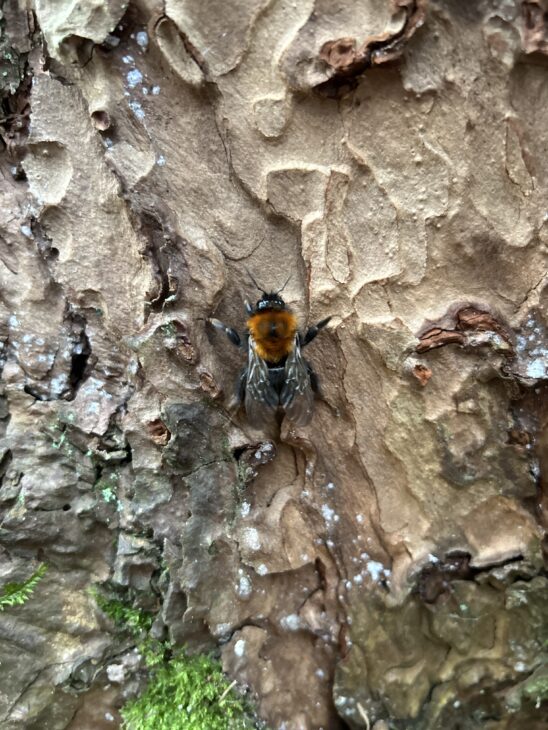A helping hand for bees
,

Spring is beginning to awaken and last week our Project Officer spotted her first tree bumblebee of the year. As you can imagine, the bee was a bit sluggish after a long winter sleep. The bee would have been seeking food and heat. The risk is that this mild period of winter could be a false start for many of our wildlife waking up, only to find there is no food and warm days are still a way off.
Now the trend is to provide a sweet boost with sugar, water or honey water and while a 2:1 mix of sugar water is fine for a bee on a cold day to get them started, honey water is definitely not. Honey carries bacteria from a different species of bee and this can be deadly to our lovable bumbles.
Just like you and I, bumblebees are cold in the morning and take a bit of heating up to get going. They do this by shivering which heats up their wing muscles. The shivering is their form of going to the gym for exercise – personally, I’ll take a hot shower and then a coffee with breakfast to heat me up.
Which brings us on to their food supply. It is much healthier for the bee to feed from a plant than to take our sugary substitute, which is highly processed and refined. I often wonder if we are hitting them up for a sugar buzz that they might not be able to cope with. The best thing that we can do to help out bees is to consider the plants we put in our gardens: what can provide a good source of pollen and nectar to help them when everything else is still sleeping; what species can we find to help support them early spring and late autumn?
With that in mind, I am off to the garden centre to see what can fill my plant pots, while our greenspaces around the town continue with their natural cycle and slumber. Post your sightings of the first fuzzbutts you see on our Facebook page – Cumbernauld Living Landscape.
